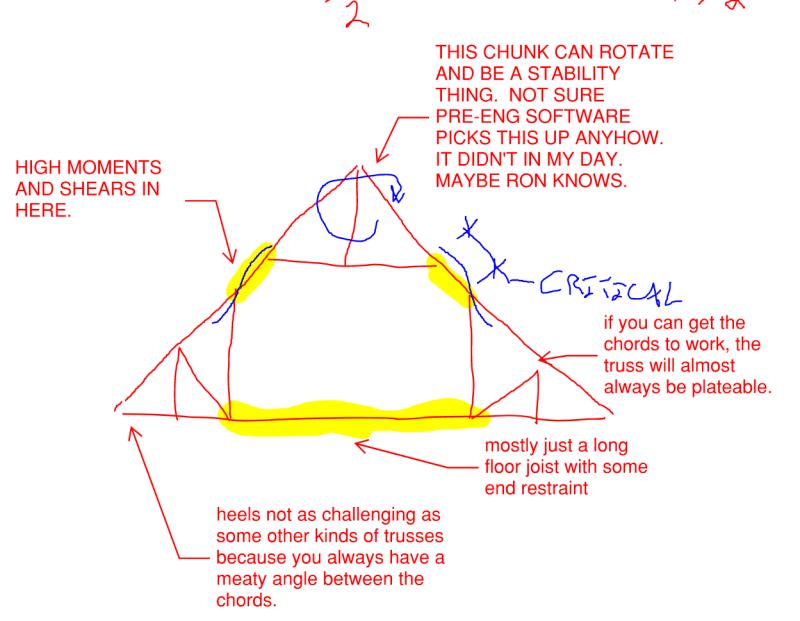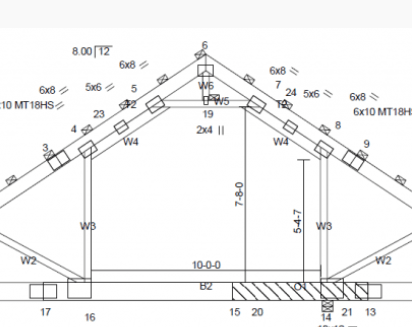We had a good discussion on attic trusses a few years ago: thread507-475689
I'm curious, for those experienced (KootK! RontheRedneck!), what are some good rules of thumb for these? Span vs. depth vs. clear width of room vs. roof slope, etc. I have one client who is always shoving rooms into the attic with funky roof lines, and these are a great way to give him what he wants without forcing the framer into some reciprocal framing mess. But I'm always nervous I'm going to hand the truss manufacturer an impossible problem. I collaborate with the local designers when I can, but there's not always time for that, especially on the initial pass at the framing plans.
I'm curious, for those experienced (KootK! RontheRedneck!), what are some good rules of thumb for these? Span vs. depth vs. clear width of room vs. roof slope, etc. I have one client who is always shoving rooms into the attic with funky roof lines, and these are a great way to give him what he wants without forcing the framer into some reciprocal framing mess. But I'm always nervous I'm going to hand the truss manufacturer an impossible problem. I collaborate with the local designers when I can, but there's not always time for that, especially on the initial pass at the framing plans.



![[glasses] [glasses] [glasses]](/data/assets/smilies/glasses.gif)